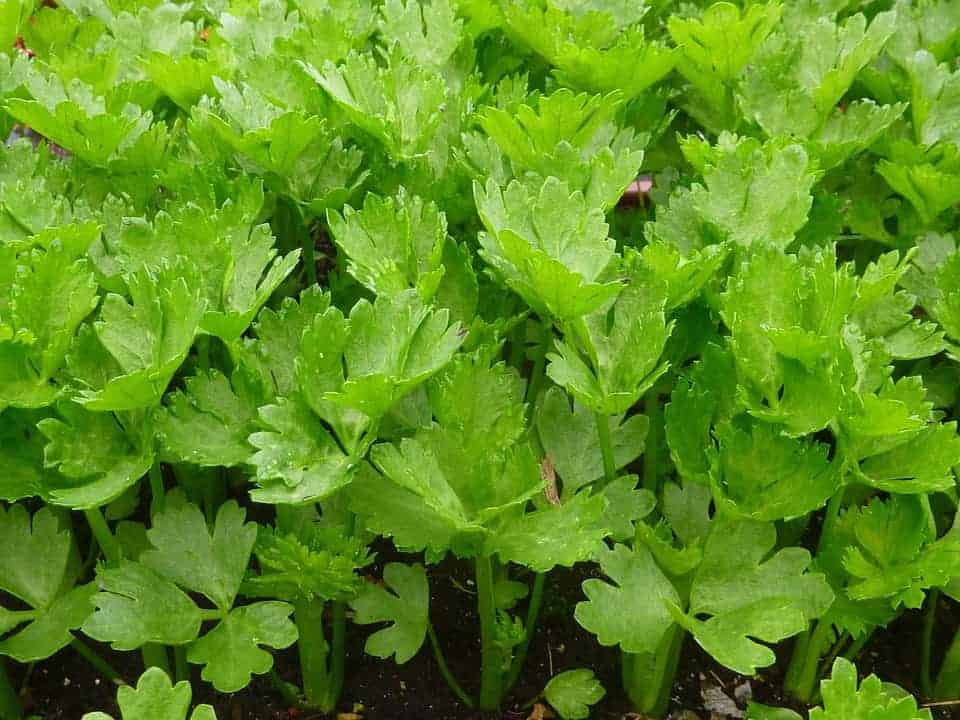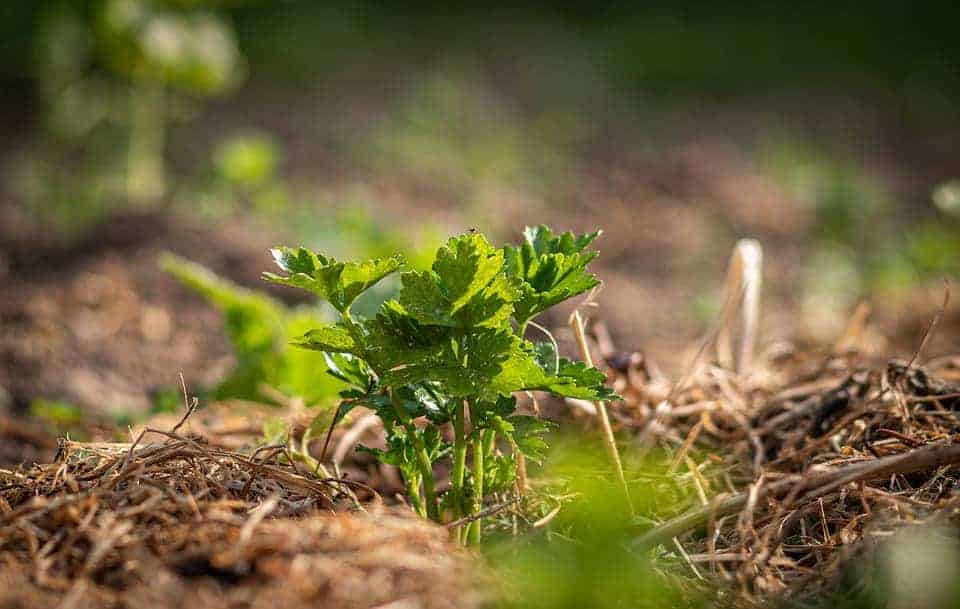Celery has a reputation for tasting bland, but when you grow your own, you’ll find it has a smooth yet intense celery flavor. Celery is a versatile vegetable, used in soups, in salads, and it can even be pickled for a nice winter treat.
Celery is a cool-weather vegetable but because it has a long growing season, you can’t do fall plantings like kale or lettuce. You should sow celery seeds early in the spring, transplant in late spring, and then harvest in either the late summer or late fall, depending on the length of your growing season and the variety of celery you’re growing.
If starting from seed, sow celery seeds 8 to 12 weeks before your last average frost date. Once your celery seedlings are around 2 inches tall and have a few sets of true leaves, transplant after your last frost and when the night temperatures don’t fall below 50°F (10°C). Use the days-to-maturity on the seed packet or transplant label to find out the optimal time to harvest, but ideally you should harvest before your first hard frost (a light frost is fine) and when the base of your celery plants are around 2 to 3 inches in diameter.
On this page:
When and How to Sow Celery Seeds
Celery has a fairly long growing season, with the fastest-growing celery varieties maturing in 80 to 90 days. Most varieties will take at least 110 days to maturity.
Because of this, you should sow your celery seeds early, whether you have a short growing season or a long one. Sow celery seeds 8 to 12 weeks before your last frost.
 When sowing celery seeds, it’s common practice to surface sow them, meaning you just sprinkle the tiny seeds on the surface of the soil or potting mix in seed starting cells or small pots, and keep them moist until they sprout. If sowing underneath the surface, plant them 1/4 inch deep. Celery takes a notoriously long time to germinate, up to 30 days, but if the seeds are not too old and you keep them evenly moist and warm, you might see sprouts within 1-2 weeks.
When sowing celery seeds, it’s common practice to surface sow them, meaning you just sprinkle the tiny seeds on the surface of the soil or potting mix in seed starting cells or small pots, and keep them moist until they sprout. If sowing underneath the surface, plant them 1/4 inch deep. Celery takes a notoriously long time to germinate, up to 30 days, but if the seeds are not too old and you keep them evenly moist and warm, you might see sprouts within 1-2 weeks.
A trick many gardeners use is to cover the seed tray or pot with plastic to keep the moisture in until the seeds germinate.
Once sprouted, put your celery seeds under grow lights, at least several inches away so the seedlings don’t wilt. Celery seedlings are notoriously heat tender and can wilt easily.
After your celery seedlings become established and grow their first true leaves (the celery-leaf shaped leaves that grow after the initial two seed leaves), you can thin them out to one plant per cell or one plant per small pot that you’re starting them in.
Alternatively, you can sprinkle all the seeds in one pot, then when they grow their first true leaves, you can very carefully tease them out of the soil without damaging the roots and transplant into separate cells in a seed tray or small pot.
When to Plant Celery Transplants
You can transplant celery after they have at least 2-4 sets of true leaves, are at least 2 inches tall, and night temperatures stay above 50°F (10°C).
 If you’ve started your own celery from seed, it’s good practice to harden off your seedlings before transplanting. Hardening off means “toughening up” your seedlings by exposing them to the sun and wind and cool weather outside gradually, so they don’t get shocked too much when transplanting.
If you’ve started your own celery from seed, it’s good practice to harden off your seedlings before transplanting. Hardening off means “toughening up” your seedlings by exposing them to the sun and wind and cool weather outside gradually, so they don’t get shocked too much when transplanting.
Harden off celery seedlings by watering them a little less and taking them outside for a few hours a day for at least a few days, up to two weeks. Each day, keep them out a little longer than before, until eventually they can just stay outside. The best times to take them out are the early morning and late afternoon when the sun isn’t as strong.
If you’re buying celery transplants from the nursery, hardening off isn’t necessary.
Transplant celery approximately 6 to 10 inches apart in a row.
When to Harvest Celery
You can harvest celery at any time, but for full-sized celery, harvest after the days-to-maturity on the packet but before your first hard frost, when the base of the celery plant is 2 to 3 inches in diameter.
To harvest a whole head of celery, use a sharp knife to cut it right at the level of the soil or just below.
Both celery stalks and leaves are edible. The leaves can be eaten raw or used as flavoring in soups.
Common Celery Varieties and their Days to Maturity
- Utah Tall – 110 days
- Green Giant F1 – 105 days
- Redventure – 105 days
- Victoria F1 – 100 days
- Golden – 95 days
- Tango – 90 days
- Giant Red F1 – 90 days
- Conquistador – 85 days
